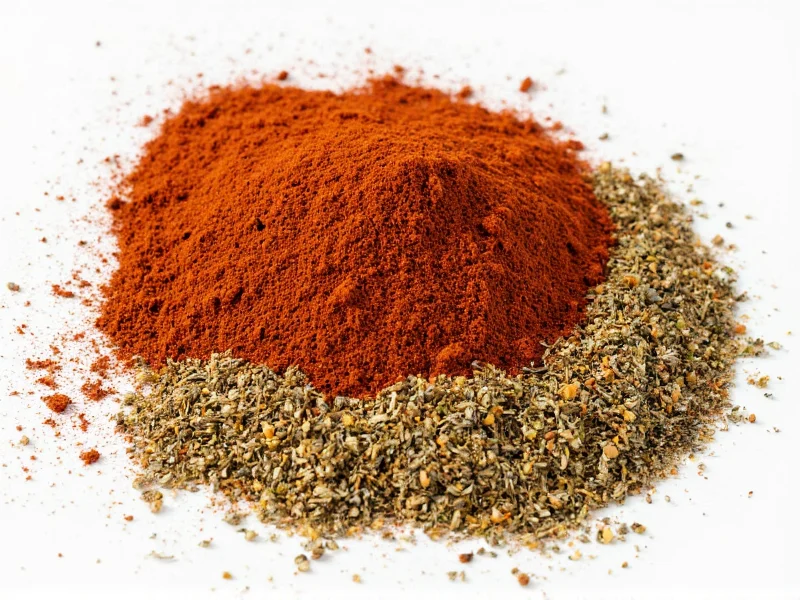Beef stew represents culinary alchemy where humble ingredients transform into something extraordinary. The right spice selection makes the difference between a bland pot of meat and vegetables and a deeply flavorful, aromatic masterpiece that warms both body and soul. Understanding which spices complement beef's richness while enhancing vegetable sweetness creates stews worthy of family gatherings and special occasions.
Essential Herbs for Beef Stew Mastery
Traditional beef stew relies on a holy trinity of herbs that have stood the test of time. These aren't arbitrary choices but rather flavor companions that naturally harmonize with beef's umami richness.
Bay leaves provide subtle complexity without dominating. Their mild bitterness balances the stew's sweetness while adding a faint floral note. Always remove bay leaves before serving—they're strictly for infusion. Thyme delivers earthy, slightly minty notes that penetrate meat fibers during slow cooking. French thyme offers the most authentic flavor profile for classic beef stew recipes. Rosemary contributes pine-like aroma that cuts through richness, but use sparingly as its strong flavor can overwhelm other ingredients.
| Essential Herb | Flavor Profile | Recommended Amount (per 2 lbs beef) | Addition Timing |
|---|---|---|---|
| Bay Leaves | Subtle bitterness, floral notes | 2-3 whole leaves | Beginning of cooking |
| Thyme | Earthy, slightly minty | 1-2 tsp dried or 4-5 sprigs fresh | Beginning of cooking |
| Rosemary | Pine-like, aromatic | ½-1 tsp dried or 1-2 sprigs fresh | Middle of cooking |
| Parsley | Fresh, grassy finish | 2 tbsp chopped fresh | Final 5 minutes |
Spice Blending Principles for Richer Flavor
Understanding spice chemistry separates adequate stews from exceptional ones. The Maillard reaction during searing creates flavor compounds that interact uniquely with different spices. When building your beef stew spice profile, consider these professional techniques:
Dry spices benefit from 'blooming' in oil before adding liquids. This process unlocks essential oils that would otherwise remain dormant in water-based cooking. For instance, heating paprika in olive oil for 30 seconds before adding stock creates dramatically deeper flavor than adding it directly to the stew. Similarly, toasting whole peppercorns before grinding releases volatile compounds that provide more complex heat.
The acid component matters as much as the spices themselves. A splash of red wine vinegar or balsamic vinegar added near the end brightens heavy flavors and makes spices more perceptible. This technique works particularly well with earthy herbs like thyme and rosemary, making their flavors more pronounced without increasing quantity.
Regional Variations and Cultural Adaptations
Beef stew traditions vary globally, each with distinctive spice signatures. Understanding these regional approaches provides inspiration for customizing your own perfect blend.
French boeuf bourguignon features pearl onions and mushrooms alongside the classic herbs, with red wine providing acidity instead of tomatoes. The Provençal version adds herbes de Provence—a blend including savory, marjoram, and oregano. Irish stew traditionally uses minimal spices beyond black pepper, relying on the natural flavor of lamb (though beef variations exist).
American Midwest stews often include Worcestershire sauce and a touch of brown sugar for balance. In contrast, Hungarian goulash features sweet paprika as the dominant spice, sometimes with caraway seeds. South American versions might incorporate aji peppers or cumin for subtle heat. These regional differences demonstrate how cultural preferences shape spice selection while maintaining the fundamental stew structure.
Avoiding Common Beef Stew Spice Mistakes
Even experienced cooks make spice errors that diminish their beef stew's potential. Recognizing these pitfalls ensures consistently excellent results.
Over-reliance on pre-mixed seasoning blends creates one-dimensional flavor. While convenient, these often contain excessive salt and lack the nuanced balance of individually measured spices. Similarly, adding all spices at the beginning causes volatile compounds in delicate herbs to evaporate during long cooking.
Another frequent error involves improper spice-to-liquid ratios. In high-altitude cooking or when using wide pots, increased evaporation concentrates flavors unexpectedly. Adjust spice quantities downward in these situations. Remember that salt requirements change based on broth sodium content—always taste before final seasoning.
Advanced Flavor Layering Techniques
Professional kitchens achieve depth through strategic spice layering. Implement these techniques for restaurant-quality results at home.
Start with aromatics: sauté onions, carrots, and celery in bacon fat to build foundational flavor. Then sear meat properly—this creates fond (browned bits) that contains complex flavor compounds. Deglaze with red wine, scraping the bottom thoroughly to incorporate these flavors.
Add hardy herbs like thyme and rosemary with the liquid base. Introduce medium-intensity spices like paprika and mustard powder midway through cooking. Reserve delicate elements like fresh parsley and a splash of vinegar for the final minutes. This staged approach ensures each component contributes optimally without being lost during prolonged cooking.
Customizing for Personal Taste Preferences
Your perfect beef stew spice profile depends on individual preferences. Understanding how to adjust proportions creates a dish that satisfies your specific palate.
If you prefer brighter, more acidic stews, increase tomato paste and add lemon zest near the end. For earthier profiles, boost mushrooms and add a splash of soy sauce. Those who enjoy subtle heat can incorporate a pinch of cayenne with the paprika or include a whole dried arbol pepper that's removed before serving.
Consider your diners' preferences too. When cooking for children, reduce strong herbs like rosemary and increase natural sweetness through caramelized onions. For guests with dietary restrictions, replace Worcestershire sauce (which contains anchovies) with mushroom-based alternatives that provide similar umami depth.











 浙公网安备
33010002000092号
浙公网安备
33010002000092号 浙B2-20120091-4
浙B2-20120091-4